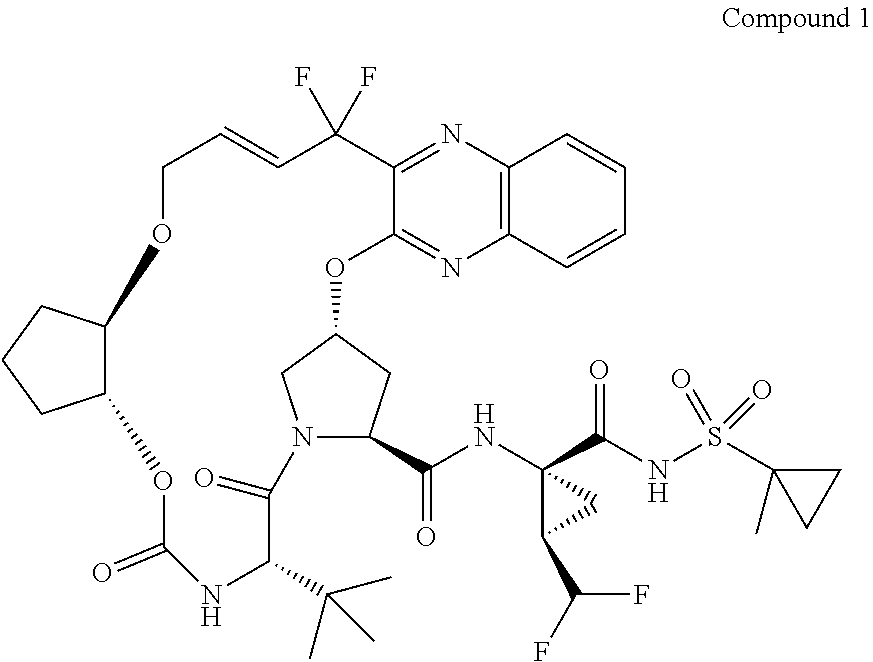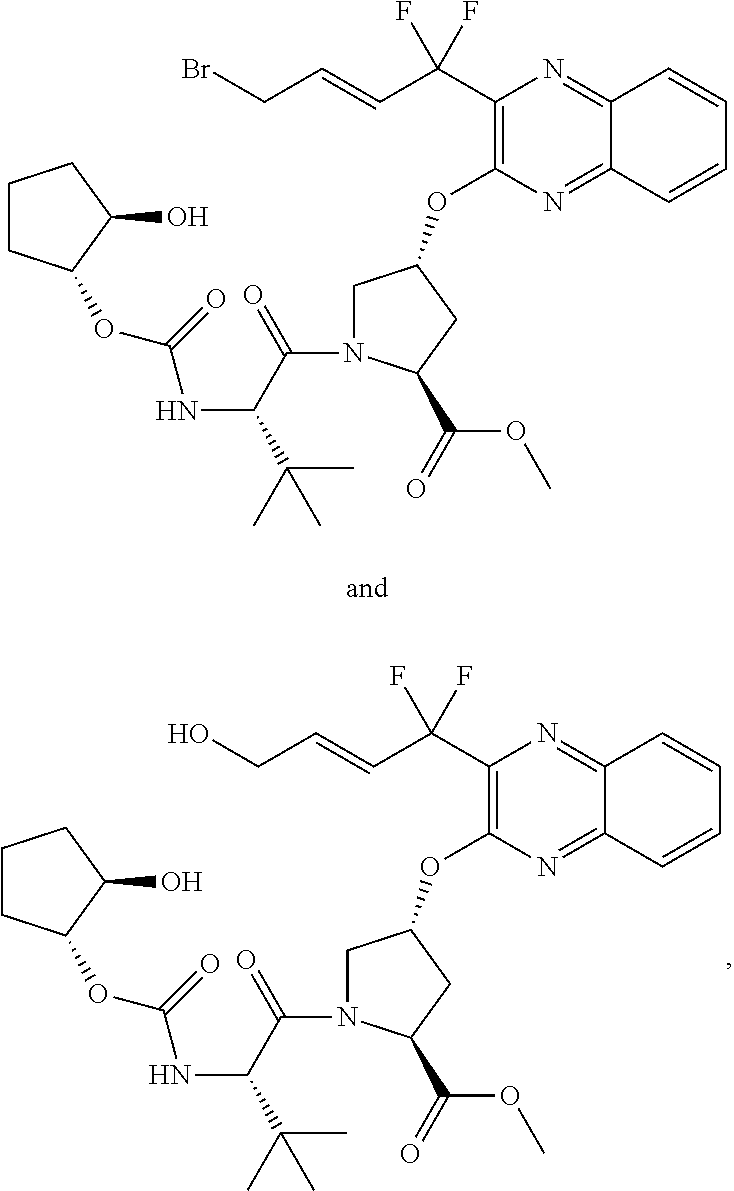Synthetic route to anti-viral agents
a technology of antiviral agents and synthetic routes, which is applied in the preparation of carbamic acid derivatives, organic chemistry, chemistry apparatus and processes, etc., can solve the problems of complex biologically active molecules that are difficult to synthesize, complex structure, and high cost, and achieve low throughput. , the effect of increasing the number o
- Summary
- Abstract
- Description
- Claims
- Application Information
AI Technical Summary
Benefits of technology
Problems solved by technology
Method used
Image
Examples
example 1
of 70
[0337]The synthesis of compound 70 is shown in the scheme below. Allyl alcohol 25 is used in the opening of cyclopentenoxide 24 to give racemic alcohol 26. The allyl group serves as a protecting group in the synthesis of 70, so the epoxide opening could alternatively be conducted using other alcohols, such as benzyl alcohol, 4-methoxylbenzyl alcohol, etc. The free alcohol in 26 is acetylated to give 27 which is then subjected to enzymatic resolution to yield the (R,R) alcohol 13. The resolved alcohol 13 is then converted to the carbamate 6 which can be isolated as the DCHA salt. Carbamate 6 is also used in the ring-closing metathesis (RCM) route for the synthesis of 1. The allyl group in 6 is cleaved to yield the hydroxy carbamate 70 which can be isolated as the diisopropylammonium (DIPA) or DCHA salts.
[0338]
[0339]
[0340]BF3 etherate (0.32 g, 2.25 mmol, 0.013 equiv.) was added to 140 mL of toluene precooled to 5° C. To the resulting solution was added a mixture of allyl alcohol ...
example 2
of 69
[0351]The synthesis of 69 shown in the scheme below begins with the addition of allyl alcohol 25 to trifluoropyruvate 60 and chlorination to yield 61. The zinc reduction of 61 yields the enol ether 62 which upon heating undergoes Claisen rearrangement to the keto ester 63. Condensation with diaminobenzene 18 yields the quinoxaline 64, which is subjected to chlorination to product 65. The displacement of the chloride with Boc-Hyp-OH 21 yields the acid 66 which can be isolated as the DIPA salt. The alkene in compound 66 is epoxidized to yield 67 which undergoes epoxide ring opening with strong base to yield the allylic alcohol 68. Removal of the Boc protecting group of 68 is accompanied with esterification to yield the ester 69. The methyl ester is shown but alternate esters can be formed, as well as alternate salts.
[0352]
[0353]
[0354]To a flask is charged dichloromethane (30 mL) followed by pyridine (1.30 equiv) and then by ethyl 3,3,3-trifluoro-2-oxopropanoate 60 (10.0 g, 1.0 eq...
example 3
of 1 Via Etherification (Scheme 1)
[0368]
[0369]To a flask was charged 69 (1.9 g, 3.4 mmol, 1.0 equiv.) and CH3CN (10 mL) followed by DIPEA (1.8 mL, 10. mmol, 3.0 equiv.) and the resulting solution stirred at r.t. for 10 min. and was then cooled to 0° C. Chlorotrimethylsilane (0.57 mL, 4.5 mmol, 1.3 equiv.) was added and the solution stirred at 0° C. To a separate flask was added 70 (1.73 g, 4.81 mmol, 1.44 equiv) and 1-[bis(dimethylamino)methylene]-1H-1,2,3-triazolo[4,5-b]pyridinium 3-oxid hexafluorophosphate (HATU) (1.83 g, 4.81 mmol, 1.4 equiv) and CH3CN (12.5 mL). The resulting yellow solution was stirred at r.t. for 20 min. and was then added dropwise to the solution of 69 at 0° C., using a 1 mL CH3CN rinse to complete the transfer. The reaction was warmed to 20° C. and stirred overnight. Toluene (15 mL) and 5 wt % formic acid (15 mL) were added to the reaction. The lower aqueous layer was separated and extracted with toluene (10 mL). The combined organic layers were washed with ...
PUM
 Login to View More
Login to View More Abstract
Description
Claims
Application Information
 Login to View More
Login to View More - R&D
- Intellectual Property
- Life Sciences
- Materials
- Tech Scout
- Unparalleled Data Quality
- Higher Quality Content
- 60% Fewer Hallucinations
Browse by: Latest US Patents, China's latest patents, Technical Efficacy Thesaurus, Application Domain, Technology Topic, Popular Technical Reports.
© 2025 PatSnap. All rights reserved.Legal|Privacy policy|Modern Slavery Act Transparency Statement|Sitemap|About US| Contact US: help@patsnap.com



